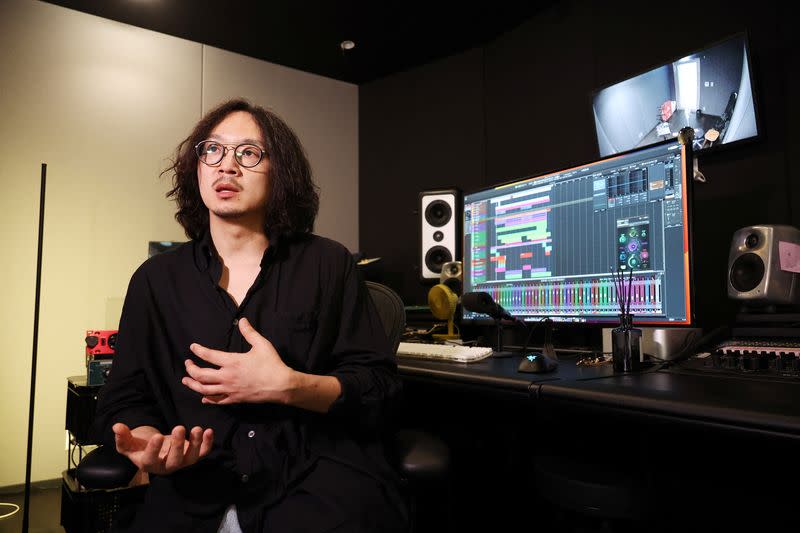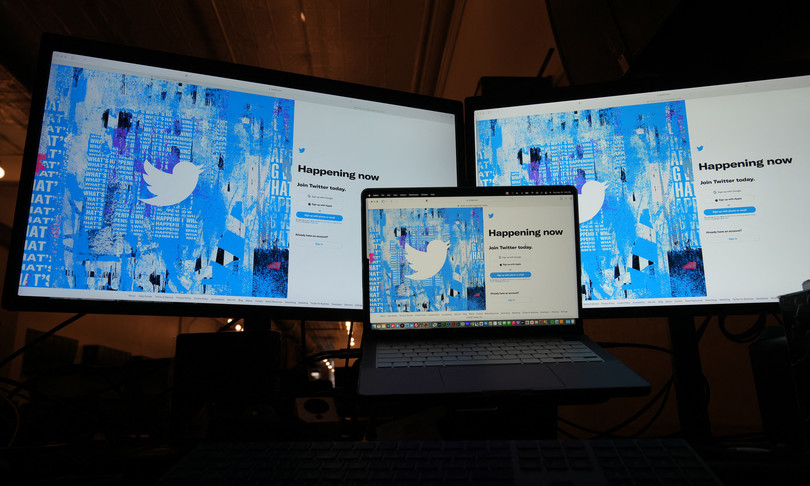뉴스&스피킹(영자신문)
하루 10분이면 영어에 대한 두려움을 극복하고 누구나 유창하게 영어를 구사하실 수 있습니다.
-
 Canada Releases Plan to End Inefficient Fossil Fuel Subsidies Canada on Monday presented its plan for ending many of its fossil fuel industry subsidies. The plan’s release makes Canada the first member-country of the Group of 20 to honor a 2009 promise to end government financial support to the industry.
Canada Releases Plan to End Inefficient Fossil Fuel Subsidies Canada on Monday presented its plan for ending many of its fossil fuel industry subsidies. The plan’s release makes Canada the first member-country of the Group of 20 to honor a 2009 promise to end government financial support to the industry.
Climate policy experts say the announcement marks an important step forward. But some argue that the plan falls short by continuing to permit government support for some oil and gas projects. The proposed measure includes exceptions that would permit subsidies for projects that plan to reduce emissions through technology like carbon capture and storage, or CCS.
Canada said it will not cancel any current multi-year subsidy agreements that are already in place.
Steven Guilbeault is Canada’s Environment Minister. He said the plan guarantees that “federal support for oil and gas goes to projects that decarbonize” their production and show substantial reductions in greenhouse gas emissions.
Active fossil fuel operations are exempt from the policy if they fall into one of six categories. One category is the ability to reduce carbon emissions. Another is support for clean energy. Businesses that provide critical energy to rural communities are another exempted category, as are those that support native communities in fossil fuel activities or those that have a plan to reach net-zero emissions by 2030.
Bringing an end to fossil fuel subsidies is part of a 2022 deal signed by Prime Minister Justin Trudeau's minority Liberal party and the New Democratic Party (NDP).
The NDP critic for Climate Change and Environment, Laurel Collins, said the new rules do not go far enough.
Collins said, “it is clear that this announcement doesn't meet the urgency of the moment when climate disasters are putting everything we value at risk.”
Canada is the world's fourth-largest oil producer. Carbon capture is expected to play a major part in decarbonizing the industry. Canada last year announced a CCS investment tax credit. Carbon capture is a process by which carbon dioxide is taken from the atmosphere and stored underground.
The Pathways Alliance is a partnership between Canada's six largest oil sands producers. It is planning to develop a $12 billion CCS center in northern Alberta. Pathways President Kendall Dilling said in a statement that the organization was happy the framework recognized the need for government partnership on the project.
Canada is expected to release a plan to end public financing of fossil fuel projects within the next year.
Julia Levin is with the climate group Environmental Defense. "The Government of Canada must quickly take the final step and end all fossil financing – without any loopholes for fossil gas, fossil hydrogen or CCS,” she said.
I’m Dan Novak.View -
 AI Method Creates Six Language Versions of K-Pop Song A South Korean music production company is using a method of artificial intelligence (AI) to create different language versions of pop music songs.
AI Method Creates Six Language Versions of K-Pop Song A South Korean music production company is using a method of artificial intelligence (AI) to create different language versions of pop music songs.
The company using the method is HYBE. The company represents and produces music for some of South Korea’s top pop music performers. Korean pop music is also known as K-pop.
The AI method combines voice recordings of South Korean pop stars with recordings of song lyrics read by native speakers of other languages. The process aims to produce complete K-pop songs in multiple languages.
Officials at HYBE say the method does not change the singer’s natural voice. Instead, it uses AI to produce different language versions of the same song.
In May, the AI method successfully created a song by K-pop singer MIDNATT in six languages – Korean, English, Spanish, Chinese, Japanese and Vietnamese. The 40-year-old artist, whose real name is Lee Hyun, recorded the song Masquerade in each language.
Chung Wooyong is the head of HYBE's interactive media department. He explained the creation process to reporters with Reuters news agency. He said the process involved dividing groups of sounds into separate elements. These included things like pronunciation, voice tone and sound level.
Wooyong added that the technical team’s members then "used their imagination” to see what kind of results they could get from the technology. HYBE says the “deep learning” method permitted a first in the music industry – releasing the same song in multiple languages at the same time.
The song is the latest sign of the growing influence of AI in the music industry. AI-produced music has been flooding online music services and social media in recent months. The American-based Grammy Awards recently introduced new rules for AI-created music. In general, the rules aim to protect the music of “human creators” over works created by AI systems.
Wooyong said HYBE is currently considering how to use the AI method in its future music production operations. He noted the technology could be provided to other music creators and the public. Wooyong did not say whether the company would charge others to use the system in the future.
MIDNATT said using the AI method had given him a "wider spectrum of artistic expressions." He added, "I feel that the language barrier has been lifted and it's much easier for global fans to have an immersive experience with my music."
While the technology is not new, this method demonstrates a new way to use AI in music, said Valerio Velardo. He is the director of The Sound of AI, a Spain-based company that advises organizations on AI music and audio development.
Velardo added that he thinks such methods can help professional musicians and the general public in the future. "It's going to lower the barrier of music creation,” he said. “It's a little bit like Instagram for pictures, but in the case of music."
For now, HYBE's AI method takes "weeks or months" to do its job, said Masquerade producer Choi Jin-woo, who also uses the name Hitchhiker. However, he noted that when the process speeds up, it could serve a wider range of purposes, such as interpreting languages in video conferences.
I’m Bryan Lynn.View -
 Japan Places Export Ban on Some Computer Chips Japan recently put in place export controls on the latest microchip, or semiconductor, technologies.
Japan Places Export Ban on Some Computer Chips Japan recently put in place export controls on the latest microchip, or semiconductor, technologies.
Observers said the move targets China.
Japan’s export controls follow other recent restrictions enforced by the United States and the Netherlands, two other major producers of the most modern semiconductors.
Japan listed 23 kinds of semiconductor technology that have export restrictions. The restrictions started July 23. They include different kinds of advanced microchip manufacturing equipment.
The controls will affect China’s ability to make advanced chips, researcher Yoshiaki Takayama of the Japan Institute for International Affairs in Tokyo said.
“The Japanese measure complements U.S.-led export control measures because the number of companies with the capacity to manufacture cutting-edge chips is extremely limited,” Takayama told VOA. He added, “The Japanese measure makes it difficult for China not only to import advanced chips, but also to manufacture them.”
He added that China appears to be starting to produce less advanced semiconductors.
Western controls
The United States banned the export of some advanced microchips and semiconductor manufacturing technology to China in October and urged Western allies to do the same. The Netherlands is another important producer of semiconductors. That country enforced similar measures in June. Taiwan has also promised to support the U.S. policy.
The U.S. says it wants to prevent China from using the technology for military purposes.
The Group of Seven large economic powers discussed the issue at its meeting in Japan in May. The allies agreed on the need to “de-risk” from possible Chinese economic coercion. Members said they want to avoid becoming dependent on China for semiconductor technologies.
These combined measures will severely affect China’s ability to keep up with Western technology, Takayama said. It will hurt China’s ability to manufacture state-of-the-art semiconductors and increase its manufacturing capacity.
“Unlike the traditional mechanical technology industries, where reverse engineering has produced important technological learnings, reverse engineering does not produce useful knowledge in the semiconductor manufacturing sector,” Takayama said.
He said that today’s scientific progress is largely the result of big data research and computer technology rather than repeated trial and error. And he added that it seems that China, with limited availability of the latest semiconductors, could fall behind in scientific and technological research and development.
Unlike the United States and the Netherlands, Japan did not name China as the target of its export restrictions. The restrictions affect 160 countries. However, China still reacted angrily.
Researchers say it is important that Western allies work together on their export controls. The U.S. is expected to update its list of banned semiconductor technologies soon.
China’s response
In a retaliatory move, China banned the import of semiconductors from the American company Micron in May. Chinese officials said the ban was over national security concerns. Takayama said some companies in Japan fear China will seek to restrict their imports.
China has additionally threatened to restrict exports of two important metals in the production of semiconductors: gallium and germanium.
China’s move seems to be in response to the U.S. Chips Act and the increasing pressure on U.S. allies to restrict sales of microchip technology.
I’m Gregory Stachel.View -
 In Hollywood Strike, AI’s Part Is Important Labor unions for actors and writers are striking over pay, benefits and job protections. But Artificial intelligence technology has become a big issue in Hollywood’s labor fight.
In Hollywood Strike, AI’s Part Is Important Labor unions for actors and writers are striking over pay, benefits and job protections. But Artificial intelligence technology has become a big issue in Hollywood’s labor fight.
AI has introduced a new point of disagreement between artists and production companies. Here is a look at what both sides say they want.
Why is AI such an important issue?
With AI, star actors fear they will lose control of their likenesses. Unknown actors fear they will be replaced altogether. Writers fear they will have to share credit with or lose credit to machines.
The proposed contracts which the two sides have been attempting to negotiate is to last only three years. Even at the speed at which AI technology is developing, it is unlikely there would be a large displacement of writers or actors within that period of time. But unions and employers know that if they compromise on an issue, it will be harder to get what they want in the next set of negotiations.
New technology is important to filmmaking. AI has been used to make actors look younger, like Harrison Ford in the recent film Indiana Jones and the Dial of Destiny.
All sides in the strike know that use of new technology will continue to increase. That is why both sides are looking to establish legal and creative control.
The actors’ view
Actors in the labor discussions are represented by the Screen Actors Guild–American Federation of Television and Radio Artists (SAG-AFTRA). The Alliance of Motion Picture and Television Producers (AMPTP) represents the production companies, which are the employers. The strike started on July 13.
SAG-AFTRA released an opinion of the studios’ position on the use of AI and their images. The group said the production companies want “…to scan a background performer’s image, pay them for a half a day’s labor, and then use an individual’s likeness for any purpose forever without their consent."
The union also said employers want “…to be able to make changes to…dialogue, and even create new scenes, without informed consent.”
The AMPTP said in a statement that its offers included an “AI proposal which protects performers’ digital likenesses, including a requirement for performers' consent for the creation…of a performance.”
SAG-AFTRA said it wants to protect “human-created work” including changes to the “voice, likeness or performance” of an actor.
Observers say that "voice" comes first on that list for a reason. AI voice technology might be more developed than visual technology. For example, the voices of the late Anthony Bourdain and the late Andy Warhol have both been recreated for recent films.
Writers want credit
During the writers’ contract talks, which broke down in early May, the Writers Guild of America (WGA) said it did not oppose the use of AI. But AI should only be used as a tool to use in a writer’s own work.
The union said writers might be willing to shape stories with help from AI software. But they did not want it to affect the credits that influence their position and pay.
The WGA wants to prevent entirely AI-created stories or dialogue from being considered “literary material.” This means they would not be competing with computers for credit.
The AMPTP said in a document explaining its position that writers “want to be able to use this technology as part of their creative process, without changing how credits are determined, which is complicated given AI material can’t be copyrighted.”
“Only a ‘person’ can be considered a writer,” the AMPTP added. “AI-generated material would not be eligible for writing credit.”
This position could calm writers’ worries about sharing credit with AI. But it could also lead to no one getting credit when they use AI.
Modern movie writing contracts are very complex and hard to understand. So is the question of who receives credit for the work. Observers say adding AI makes the problem even more difficult.
I’m Dan Novak.View -
 Twitter Introduces New ‘X’ Logo to Replace Blue Bird Twitter owner Elon Musk has launched a new logo – the single letter “X” – to replace the social media service’s famous blue bird.
Twitter Introduces New ‘X’ Logo to Replace Blue Bird Twitter owner Elon Musk has launched a new logo – the single letter “X” – to replace the social media service’s famous blue bird.
The X design started appearing at the top of Twitter’s computer version on Monday. But the old bird logo could still be seen across areas of the service.
Musk announced in a Twitter message Sunday that he had decided to change the company’s logo. He said he had asked his millions of followers to provide logo ideas and if they would favor a change in the service’s colors from blue to black.
When asked what tweets would be called without the blue bird logo, Musk said they would now be known as “Xs.”
The latest change is one in a series Musk has carried out since buying Twitter for $44 billion last year.
The billionaire businessman dismissed about 75 percent of the company’s workforce soon after the deal closed. Musk said the move was necessary to make Twitter more effective and increase profits. He also announced plans to start charging Twitter users eight dollars a month to keep a verified account.
As Twitter chief, Musk also lifted some existing restrictions on user content. He said those changes were part of a larger effort to protect the free speech of Twitter users. Critics said his plans were likely to increase the amount of harmful content and hate speech appearing on the service.
Musk’s changes led to drops in the number of Twitter users. Some advertisers stopped doing business with the company, as well.
In a message on Twitter Monday, chief executive Linda Yaccarino wrote, “X is here! Let’s do this.” Along with her message, she published a picture of the logo projected onto the building’s headquarters in San Francisco
Musk also commented on the logo change, writing, “And soon we shall bid adieu to the twitter brand and, gradually, all the birds.” Musk said the X.com web domain was already redirecting users to Twitter.com.
A three-member team designed the first Twitter logo in 2012. One of those designers, Martin Grasser, described the blue bird logo as "simple, balanced” and easy to read at very small sizes.
Matt Rhodes is with the British creative agency House 337. He told news agency Reuters that making changes to such an established brand presents big business risks. "Anything that makes it harder for people to find, or want to open the app on their cluttered phone screens risks harming usage," Rhodes said.
However, Paolo Pescatore, a technology and media specialist who founded advisory company PP Foresight, said the change could be good. He spoke to the Associated Press.
Pescatore said social media users currently can get confused by too many apps and messaging services to choose from. Driving users to one central place will “engage” more users and could make Twitter easier to use, he said.
Musk has long been interested in the letter X. He had already changed Twitter's official name to X Corp after buying the company.
The billionaire is also CEO of rocket company Space Exploration Technologies Corporation, commonly known as SpaceX. He started an artificial intelligence company this month called xAI to compete with OpenAI. And in 1999, he founded a startup called X.com, an online financial services company now known as PayPal.
Musk's Twitter purchase and rebranding effort are seen as steps toward his stated plans to create what he has called an “everything app.” Such an app would be similar to China’s WeChat, which combines video, messaging, streaming and payments.
Yaccarino wrote on Twitter that she sees X becoming “the future state of unlimited interactivity – centered in audio, video, messaging, payments/banking – creating a global marketplace for ideas, goods, services, and opportunities.”
I’m Bryan Lynn.View

